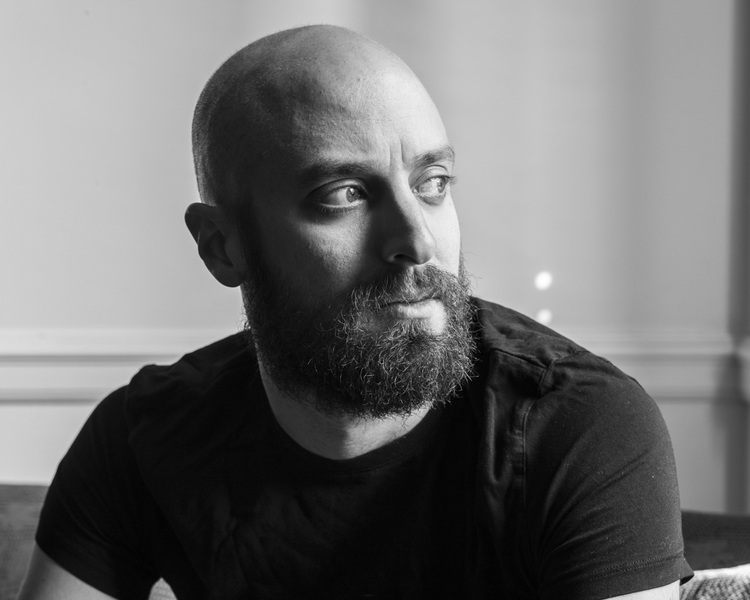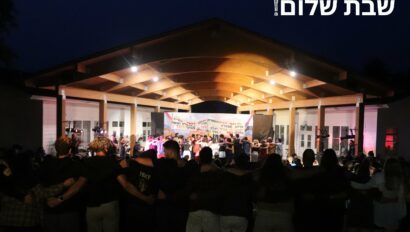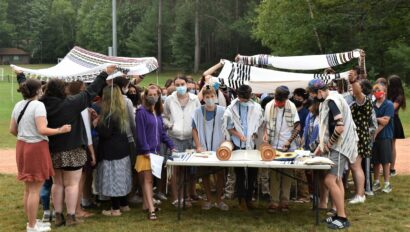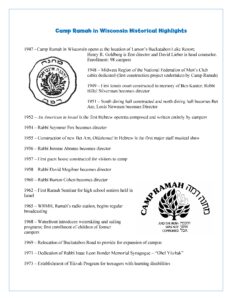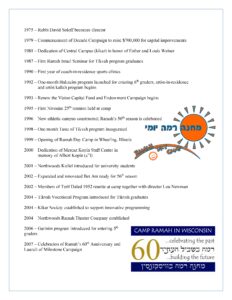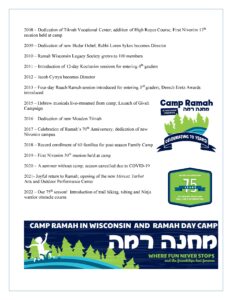Please enjoy a d’var Torah this week from Jon Adam Ross (JAR). JAR is the Managing Director of The In[HEIR]itance Project, an organization which practices an open artistic process to create theater from authentic community dialogue about shared inheritances. JAR has spent nearly 20 years making art with religious communities around the country as an actor, playwright, and teaching artist. He has served as an artist in residence at Union Theological Seminary, The Jewish Theological Seminary of America, and many other religious and educational institutions. JAR was a Spielberg Fellow in Jewish Theater Education with the Foundation for Jewish Camp and has spent 20 summers on staff at Camp Ramah in Wisconsin. As an actor, JAR has performed in over 90 cities around the globe. His stage credits include: a dog, a 2,000 year old bird, an elderly orthodox Jew, a spurned housewife, a horse, a British naval officer in 1700’s Jamaica, a goat, Jesus, a lawyer, a hapless police chief, and a cyclops. JAR holds a BFA in Acting from NYU/Tisch.
Stretch: Reflections on Parashat Lech Lecha
by Jon Adam Ross
In 2010, 33 miners were trapped in the heart of the earth in Chile. For almost 70 days, the men kept each other alive. And on October 10 all 33 men were rescued. That Shabbat, Jews around the world read parashat Lech Lecha and I found myself in Chicago’s Lakeview neighborhood at Anshe Emet Synagogue where Rabbi Michael Siegel talked about the work of a sofer (Torah scribe). He told how the Hebrew letter lamed ל rises tallest among all letters in the Torah and the chaf sofit ך falls the lowest of all letters. The sofer therefore has to measure the margin between lines based on the height of the lamed and the depth of the chaf sofit – the two letters that make up the words Lech Lecha. Rabbi Siegel tied this teaching to the story of the miners, who were at the lowest depth possible and then experienced the highest high when they were saved.
Fast forward 9 years. This week I had the privilege of learning from Barbara Rosenblit about her interpretation of Lech Lecha at the Covenant Foundation’s annual Pomegranate Prize breakfast. The breakfast was held in a room with a view of the Statue of Liberty. I was captivated by Lady Liberty’s arm stretched up to hold the torch, the beacon. Barbara talked about how God is asking Abraham to stretch himself by letting go of the past and I was reminded of Rabbi Siegel’s teaching. The stretching of the sofer’s quill – high and low. Which in turn made me think of camp. Abraham was sent out from the home of his family to stretch himself and find his way. Camp Ramah is that for so many campers. It’s a place we can stretch ourselves and try new things we’ve never had the chance to try at home and school. I went to a large public high school where fewer than 1% of the students made the basketball team. But at Camp Ramah, I could play basketball every day. Or audition for a role in the musical. Or build something in Nagarut (my school didn’t have a woodshop).
Camp Ramah invites us to stretch ourselves. Swim a lap? Good! Swim to the island? Great! Now try swimming AROUND the island! Have an Aliyah? Yasher Koach! Read an Aliyah? Fantastic! Lead tfilot? Amen! Often we’re asked as educators to frame for campers and staff how they can bring camp home with them. I would say one great way is to stretch on a regular basis. Try new things, learn new skills, play new sports, write new stories. Find an island and swim around it! From the outstretched heights of Lady Liberty’s arm to the trek of Abraham, the incredible swing of fate for the Chilean minters, to the tall lamed and the deep chaf sofit, we are surrounded by encouragements for stretching ourselves beyond what’s comfortable. We are surrounded by encouragements to treat every day like it’s another day at Camp Ramah.
